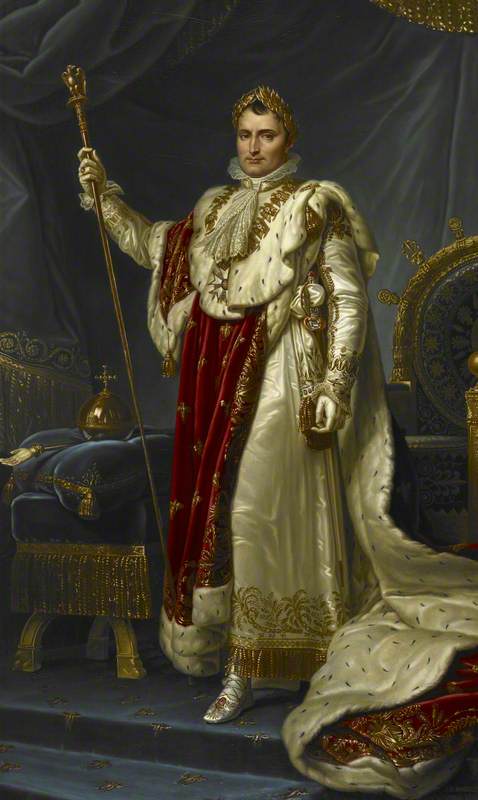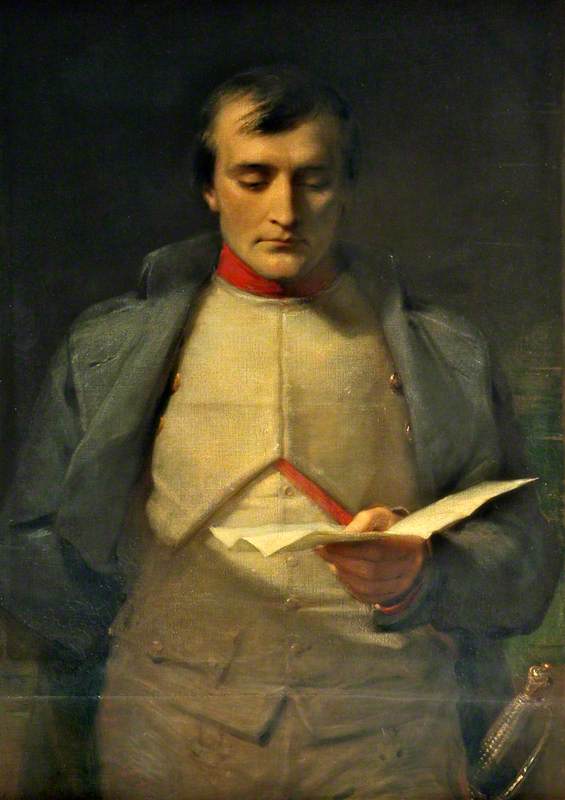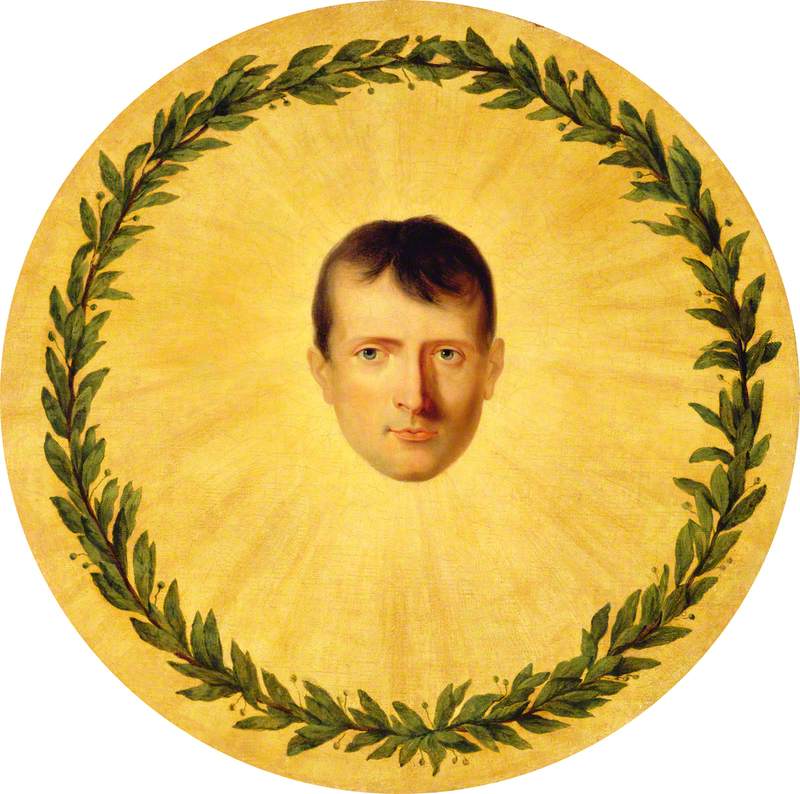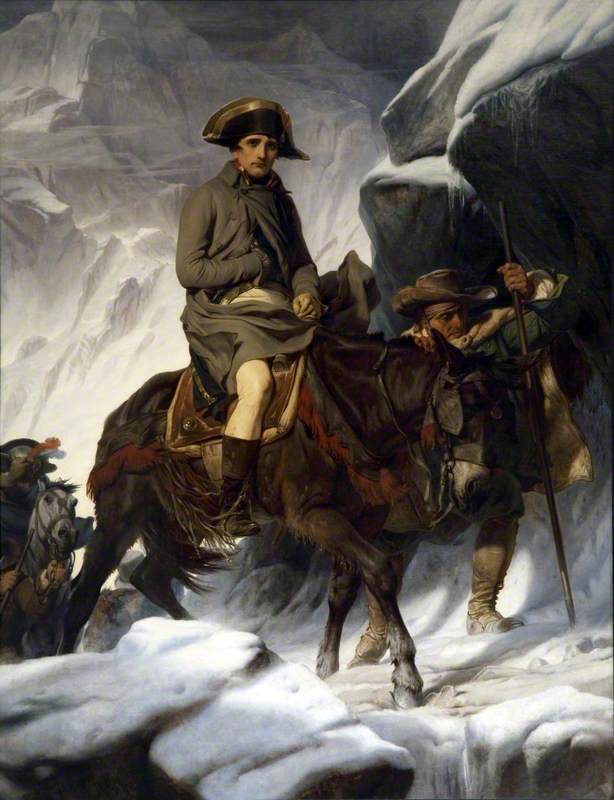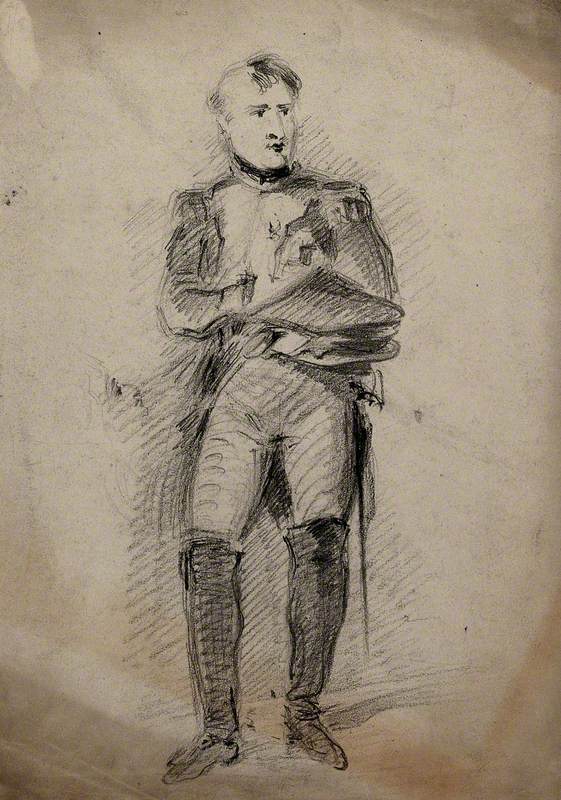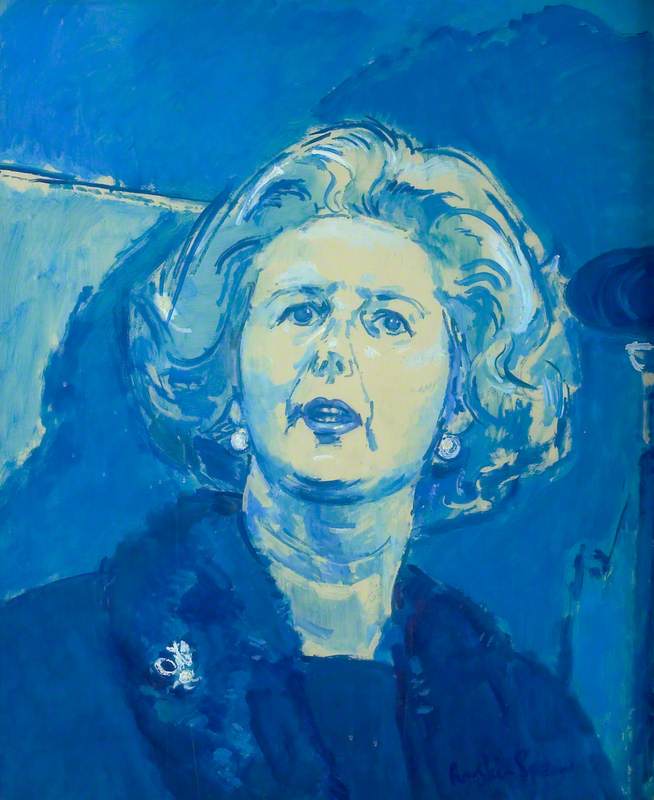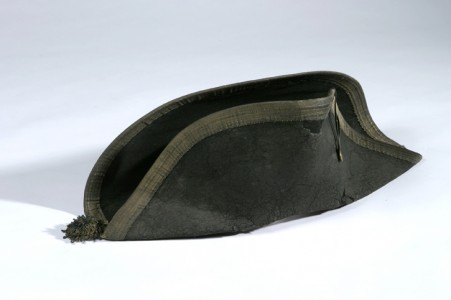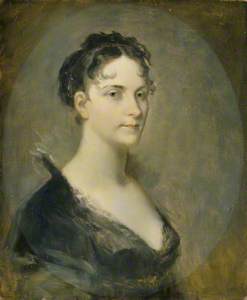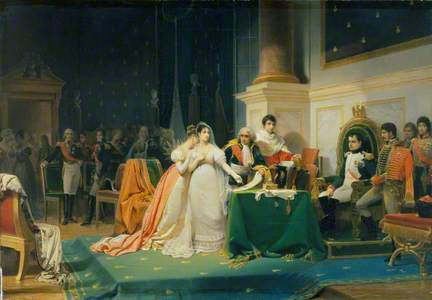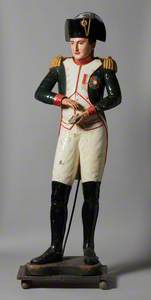'The most extraordinary character who has ever yet figured on the great theatre of the world.'
This was how The Dublin Penny Journal in 1835 described a man who was born 250 years ago, on 15th August 1769. He was one of the greatest of all military leaders. A man hated by his enemies and loved by his allies and his soldiers. A mark of a great military leader in times of war. He was – of course – Napoleon Bonaparte.
Napoleon Bonaparte (1769–1821), Emperor
1812
Robert Lefèvre (1755–1830) 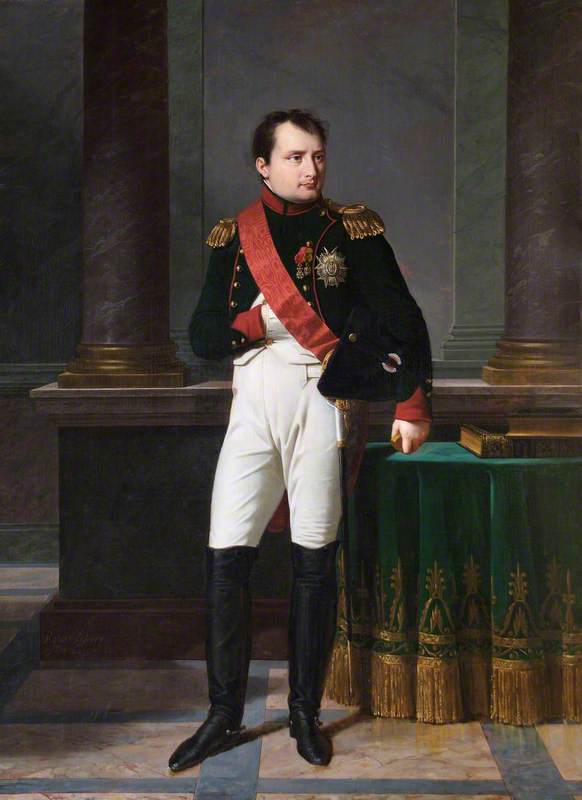
Napoleon was born at Ajaccio in Corsica and was one of 12 children, five of whom died in infancy.
Laetitia Ramolino Buonaparte (c.1750–1836), Mother of Napoleon I
early 19th C
Louis-Léopold Boilly (1761–1845) (style of) 
By the age of 26, in 1795, Napoleon was a general in the Artillery serving in the French Revolutionary Wars. A year later he married Joséphine de Beauharnais.
The French Revolution and its aftermath saw a rapid rise to power for this man from Corsica. In 1799, Napoleon – a man with a reputation forged in the wars and loved by the army – overthrew the ruling and unpopular Directory in France and become First Consul.
Napoleon Bonaparte (1769–1821), as First Consul
c.1803
Laurent Dabos (1761–1835) 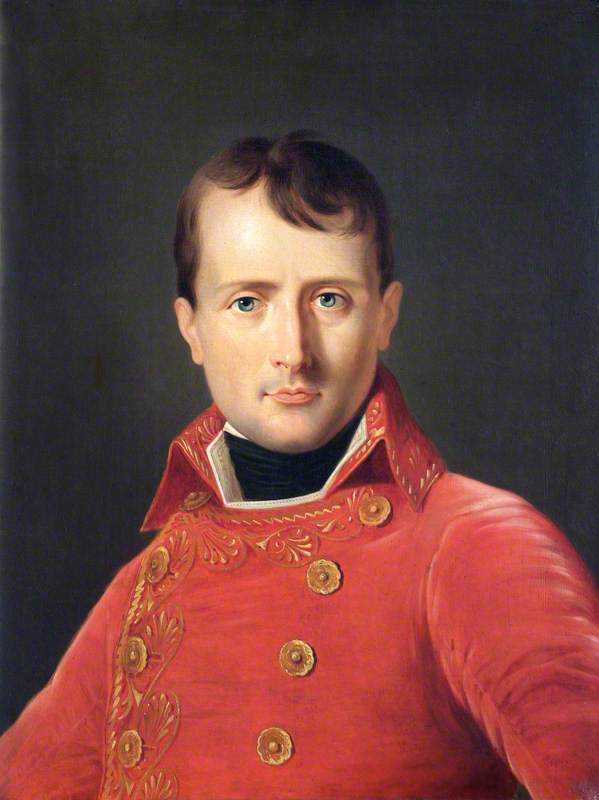
Napoleon would then become First Consul for life in 1802, following military successes in the French Revolutionary Wars, including the Battle of Marengo (1800).
He crowned himself Emperor in 1804 at the age of just 35.
Napoleon I (1769–1821), in Coronation Robes
c.1812
Anne-Louis Girodet de Roucy-Trioson (1767–1824) 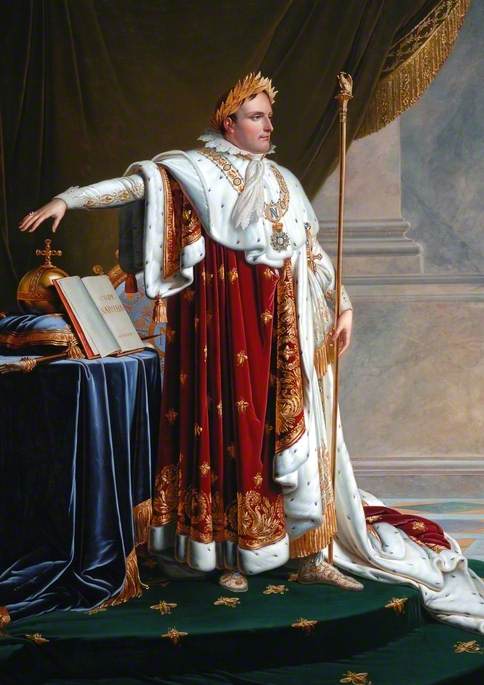
The many battles of the Napoleonic Wars raged throughout Europe in the first decade and a half of the nineteenth century, with Napoleon largely successful on land in conflicts such as Austerlitz (1805). However, France's defeat by Nelson at the Battle of Trafalgar in 1805 confirmed the British Navy's superiority at sea, and his later retreat from Russia in 1812 has become a classic example of an army overreaching itself.
Napoleon was a ruthless man and very aware of public image and reputation, as a letter written in August 1806 bears witness:
'I imagine that you have arrested the Augsburg and Nuremberg booksellers. My intention is to bring them before a court martial, and to have them shot within twenty-four hours. It is no ordinary crime to spread defamatory writings in places occupied by the French armies, and to incite the inhabitants against them.'
One of these booksellers was shot.
Art was also recognised by Napoleon for its power, evidenced by the potent paintings that exist today. Antonie-Jean Gros has been described by Christopher Prendergast as 'closest to being in everything but name his official war artist.' It was in Genoa in 1796 that Gros was introduced to Josephine. He was then sent by her to Milan and introduced to Napoleon. For the next 18 years, Gros would be occupied by Napoleon and his endeavours.
General Bonaparte Reviewing Troops
probably c.1802
Antoine-Jean Gros (1771–1835) 
With his constant awareness on his image and his place in history, Napoleon arranged his separation from Josephine in 1809 due to the marriage being childless. He wished his dynasty to continue, but Josephine was awarded two million francs as a state pension.
Napoleon then married Marie Louise, Duchess of Parma. Marie, aged 19, was the eldest child of the Habsburg Emperor Francis II of Austria. She was adored by Napoleon and bore him a son.
Napoleon had several affairs, and one of his mistresses was the renowned opera singer Josephina 'Giuseppina' Grassini. Her talent and beauty made her the most feted person next to Napoleon at one time. Andrew Roberts in his classic book Napoleon and Wellington states that the one word often used in contemporary sources to describe her was 'voluptuous'. Napoleon, however, famously showed no interest in her when she first sang for him. He was in love with Josephine.
When Napoleon responded to her attention at another concert in 1800, Josephina became his mistress. Her thoughts would not remain focused on Napoleon forever though – Grassini became a mistress of Napoleon's rival Wellington in 1814.
Arthur Wellesley (1769–1852), 1st Duke of Wellington
c.1815–1816
Thomas Lawrence (1769–1830) 
It is, of course, also warfare that defines Napoleon – his exceptional qualities as a military leader and his inspirational presence was invaluable on the battlefield. As Wellington was quoted as saying, 'I used to say of him that his presence on the field made the difference of forty thousand men'. He inspired devotion and love in his men, as this work showing his departure for Elba suggests. He was exiled here in 1814 after being forced to abdicate.
The Departure of Napoleon for Elba
Horace Vernet (1789–1863) (after) 
Napoleon would escape, helped by the fact that he was allowed to have his own guard.
His escape led to meeting Wellington (and others) in combat at possibly the world's most famous battle – Waterloo in 1815.
The cost of this conflict was more than the end of Napoleon's power – it is estimated that 47,000 men were dead, dying or wounded after this battle, and 25,000 horses. The real cost of this conflict can be seen in the work of the surgeon Sir Charles Bell who treated the wounded.
After escaping, Napoleon was still optimistic that all was not lost.
Napoleon Leaving the Field of Waterloo, 18 June 1815
George Jones (1786–1869) 
During the retreat, he wrote to his brother King Joseph that: 'All is not lost. I suppose that, when I reassemble my forces, I shall have 150,000 men... I trust the deputies will realise that it is their duty at this crisis to stand by me, and to help me to save France. Prepare them to give me worthy support. Above all, steadfastness and courage!'
Napoleon would eventually surrender to George III.
Napoleon Bonaparte on Board the 'Bellerophon' in Plymouth Sound
1815
Charles Lock Eastlake (1793–1865) 
He was exiled to St Helena, an island in the middle of the Atlantic, to avoid another Elba. St Helena was located 1,200 miles off the nearest mainland. It took ten weeks by ship to reach it. Napoleon first set foot on the island on 15th October 1815.
St Helena, 1816: Napoleon Dictating to Count Las Cases the Account of His Campaigns
1892
William Quiller Orchardson (1832–1910) 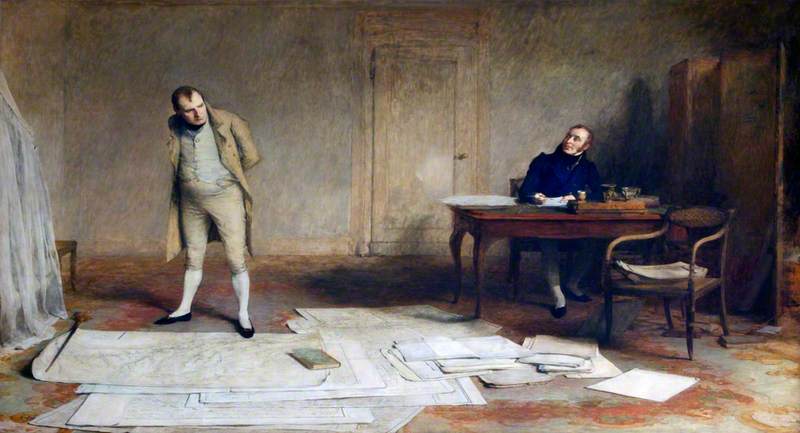
Napoleon would die here seven years later on 5th May 1821, at the age of 52.
My favourite image of Napoleon Bonaparte on Art UK is this one, a small sketch by an unknown artist held in the Wellcome Collection.
This seems to capture Bonaparte in an off-guard moment, revealing the man behind the oil paint, robes and military uniforms. A man you would probably walk past on the street without a second glance. While researching this piece I tried to understand how he accomplished what he did: Napoleon seems to have been predestined to earn a place in the history of the world and in many ways to shape it. Perhaps the biggest lesson he can teach us today is self-belief. Something that he never lacked – with that, you can literally conquer the world.
Napoléon Bonaparte (1769–1821), Emperor of France
Antoine-Denis Chaudet (1763–1810) 
'What I have done so far is nothing. I am only at the beginning of the career that lies before me' – Napoleon Bonaparte, May 1796 (aged 25).
Gary Haines, archivist and researcher




